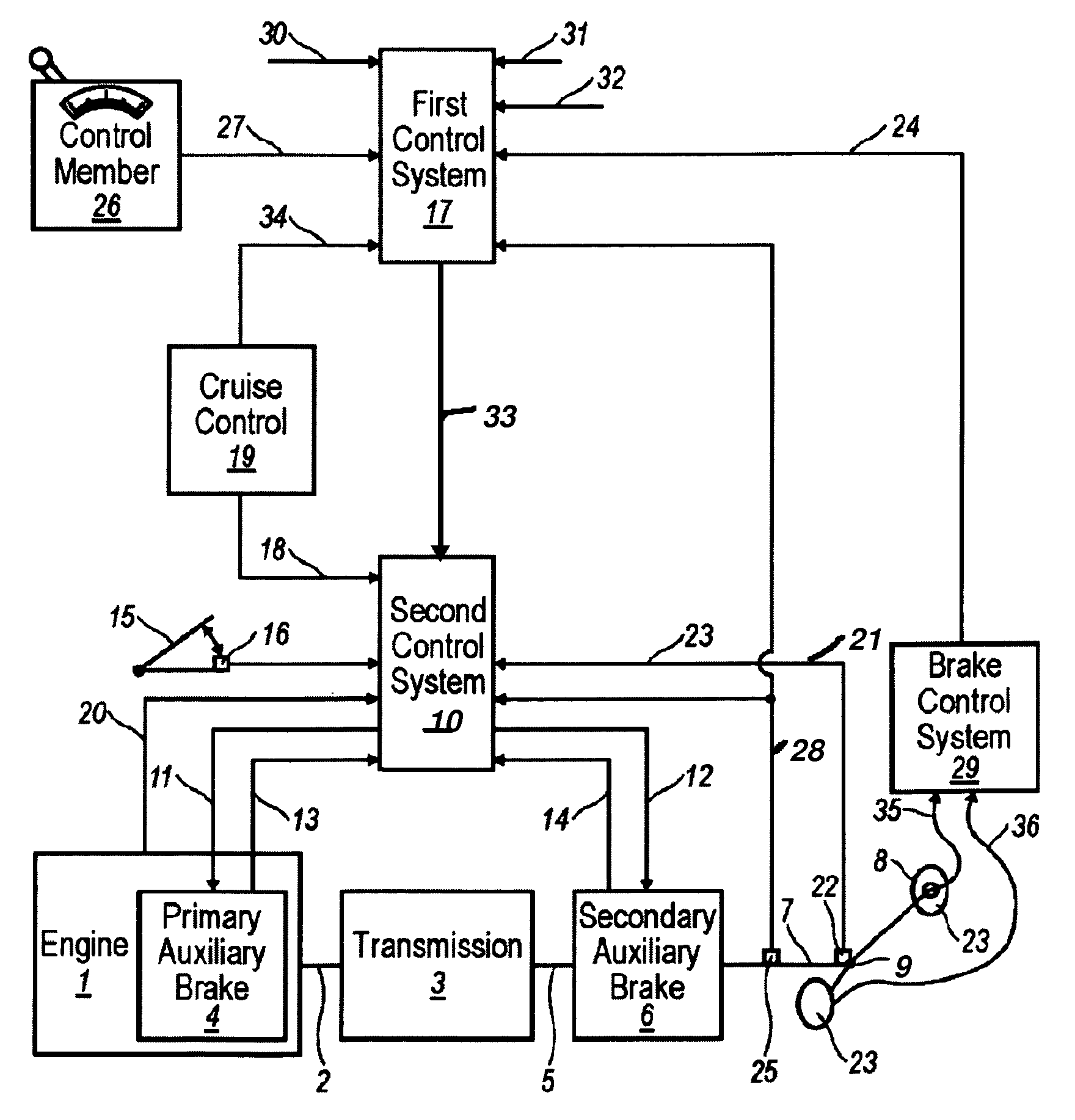Device for controlling or regulating auxiliary brake torque in a motor vehicle
a technology of auxiliary brake and motor vehicle, which is applied in the direction of braking system, process and machine control, instruments, etc., can solve the problems of transmission components being exposed to stresses in excess of their maximum torque capacity, high risk of combined brake force, and high cos
- Summary
- Abstract
- Description
- Claims
- Application Information
AI Technical Summary
Benefits of technology
Problems solved by technology
Method used
Image
Examples
Embodiment Construction
[0026]FIG. 1 shows a diagrammatic representation of a system configured according to the present invention suitable for controlling and / or regulating an auxiliary brake torque in a vehicle. An engine 1 is connected by an output shaft 2 to a transmission 3 which is the main transmission of the vehicle, and which usually offers the possibility of driving the vehicle both forward and in reverse utilizing many different gear ratios between the engine 1 and drive wheels 8. The transmission 3 can be equipped with auxiliary transmissions (for example a splitter transmission or range-change transmission) in order to obtain more drive gears. In the engine 1, a primary auxiliary brake 4 is disposed. It should be noted that the primary auxiliary brakes can also be disposed between the engine 1 and the transmission 3, or in the transmission on its input shaft. An auxiliary brake of, for example, the compression brake-type is disposed in the engine 1. A retarder is usually disposed on the input ...
PUM
 Login to View More
Login to View More Abstract
Description
Claims
Application Information
 Login to View More
Login to View More - R&D
- Intellectual Property
- Life Sciences
- Materials
- Tech Scout
- Unparalleled Data Quality
- Higher Quality Content
- 60% Fewer Hallucinations
Browse by: Latest US Patents, China's latest patents, Technical Efficacy Thesaurus, Application Domain, Technology Topic, Popular Technical Reports.
© 2025 PatSnap. All rights reserved.Legal|Privacy policy|Modern Slavery Act Transparency Statement|Sitemap|About US| Contact US: help@patsnap.com



